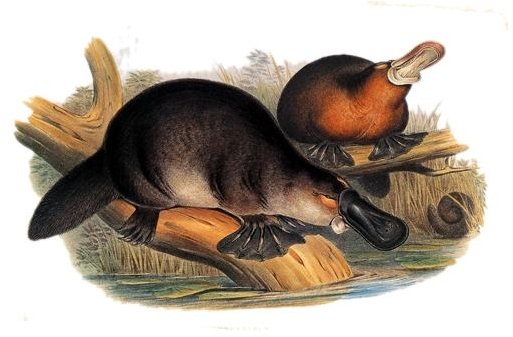Duckbill Platypus Information: Find Fun & Interesting Platypus Facts
Duckbill Platypus Information
The duckbill platypus is not your typical animal. It resembles a duck because of its bill and webbed feet, a beaver because of its tail, and an otter because of its body and fur.
Description
The size of a duckbill platypus varies depending on its location. The average size is 20 inches in length (from head to toe) and 3 pounds in weight. Their dense fur helps keep them dry, their webbed forefeet help them swim, and their flat tail helps stabilize them while swimming. When underwater, they are able to cover their eyes and ears with skin to keep water from entering. They can also close their nostrils completely and stay underwater for 1-2 minutes at a time.
Habitat
The duckbill platypus can be found in the eastern parts of Australia near fresh-water lakes and streams. They construct burrows next to the water’s edge and will normally occupy a few different burrows on different days. This is believed to help control parasites.
Behavior
Duckbill platypuses are solitary creatures and are most active during the night hours. Adult males have sharp spurs on their rear feet that contain venom. The venom is strong enough to cause much pain in humans and death in animals like dogs. It is believed to play a role in breeding because they produce more venom during this time.
Reproduction
The duckbill platypus and the echidna (also known as a spiny anteater) are the only two mammals to lay eggs. Mating occurs in the water. In about 3 weeks, the female will lay 1-3 eggs inside a burrow and keep them warm next to her body and tail. In about 10 days, the eggs will hatch and the babies will be about the size of a lima bean.
The mother will nurse them for 3-4 months until they are able to swim on their own. Like the echidna, the female platypus does not have nipples. Milk from the mammary glands, located on both sides of her belly, oozes through the skin for the babies to drink.
Diet
The duckbill platypus is a bottom feeder, meaning it feeds on or near the bottom of water. It scoops up its prey (mostly insects, shellfish, and worms) along with some gravel. The gravel is needed to help chew their food because they have no teeth.
Other
More interesting duckbill platypus information:
• The duckbill platypus has been around since the dinosaurs.
• It is estimated that the male platypus lives about 4-5 years and the female lives about 6-8 years. There are records of them living at least 16 years in the wild and 17 years in captivity.
• They are able to enter a state of torpor and can remain inactive for up to about 6 days. At this time, their body temperature drops and their heart rate can decrease from 200 beats per minute (bpm) to 10 bpm.
• The duckbill platypus is not considered endangered.
Sources Used
https://rainforest-australia.com/platypus.htm
https://animals.nationalgeographic.com/animals/mammals/platypus.html
https://www.dpiw.tas.gov.au/inter.nsf/WebPages/BHAN-53573T?open
Photo Credit
Image courtesy of Gould John - Duckbilled Platypus in “The Mammals of Australia” (1845-1863)
